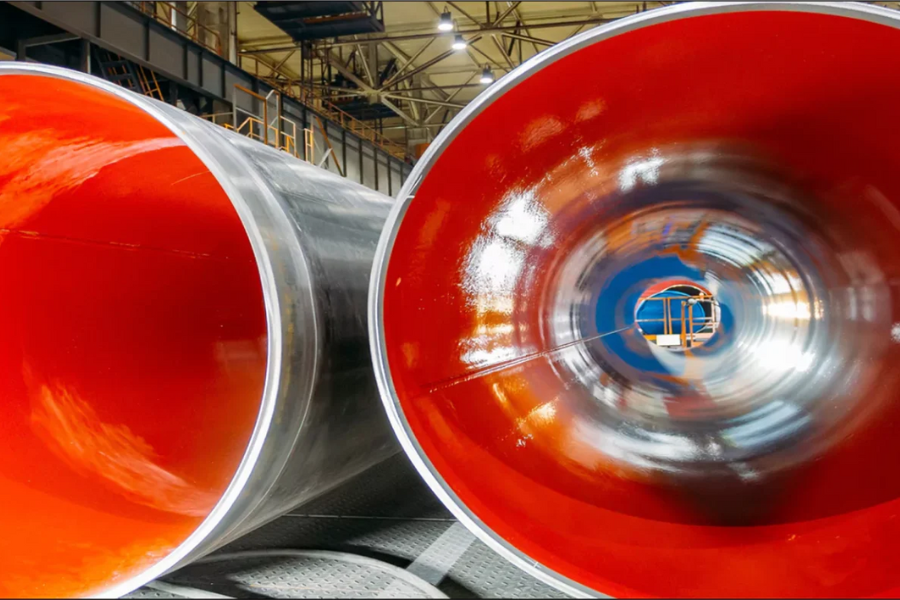Polyurea pipe coatings have brought a significant advancement to industrial piping, offering a reliable and long-lasting way to protect pipes from corrosion, chemical exposure, and physical wear. Widely used in sectors like oil and gas, water treatment, and manufacturing, these coatings are instrumental in extending pipeline longevity and efficiency. This article covers the essentials of polyurea pipe coatings, exploring what they are, their benefits and applications, and why they’re becoming the go-to choice in many industries.
What Are Polyurea Pipe Coatings?
Polyurea pipe coatings are protective layers applied to pipes to guard against issues like corrosion, wear, and chemical damage. Made from a fast-reacting elastomeric polymer, polyurea is spray-applied and cures quickly to form a durable, flexible coating. This layer serves as a robust shield that preserves the pipes and increases their durability.
Composition of Polyurea Pipe Coatings
Polyurea is created by combining an isocyanate component with a resin blend. When sprayed, these components react swiftly to create a waterproof, flexible, and durable layer that tightly adheres to the pipe. The fast-curing nature of polyurea minimizes downtime, making it an efficient choice in industries where quick turnaround is essential.
Key Advantages of Polyurea Pipe Coatings
1. Superior Durability
Polyurea coatings provide an exceptionally tough barrier that resists environmental factors such as UV light, water, and harsh chemicals. This ensures pipes maintain their integrity and functionality over a prolonged period.
2. High Chemical Resistance
These coatings are resistant to a broad range of chemicals, including acids, alkalis, and solvents, making them ideal for use in industries where pipelines are exposed to corrosive substances.
3. Rapid Curing Time
Unlike traditional coatings, polyurea cures within minutes, reducing downtime significantly—a critical advantage for industries that need continuous operations.
4. Flexibility
Polyurea remains flexible even after curing, allowing it to expand and contract with the pipe’s natural movement. This flexibility is crucial in environments with temperature fluctuations, as it helps prevent cracking or peeling.
5. Abrasion Resistance
Polyurea’s high resistance to abrasion ensures that pipes withstand physical wear and tear in challenging environments, such as in manufacturing plants or chemical processing facilities.
How Polyurea Pipe Coatings Are Applied
Applying polyurea to pipes involves a specialized spray system to create a uniform coating across the pipe surface. Here are the steps in the application process:
- Surface Preparation: First, the pipe surface is thoroughly cleaned and prepared to ensure proper adhesion, sometimes involving the removal of rust or previous coatings.
- Priming (if needed): In some cases, a primer may be applied to enhance the coating’s bond to the pipe surface.
- Spray Application: The polyurea is then sprayed using high-pressure equipment, creating an even, thick layer that maximizes protection.
- Curing: The coating begins to cure within seconds, allowing the pipes to resume service quickly with minimal downtime.
Common Applications of Polyurea Pipe Coatings
- Oil and Gas Sector: These coatings are ideal for pipelines in oil and gas, protecting them from harsh conditions like corrosion, extreme temperatures, and chemical exposure. In addition to protective coatings, a pipe pigging system is often used to maintain pipeline integrity by removing debris and ensuring efficient flow.
- Water Treatment Facilities: Polyurea’s resistance to water and chemicals makes it a top choice for pipes in water treatment plants, where leaks or corrosion could compromise operations.
- Manufacturing Plants: In these facilities, where pipes transport abrasive or corrosive substances, polyurea coatings help prevent wear and reduce the need for frequent repairs.
- Marine and Offshore Use: In the marine industry, where saltwater and humidity can damage pipelines, polyurea coatings offer superior protection, making them a preferred choice for offshore applications.
Environmental Benefits of Polyurea Pipe Coatings
Beyond protecting pipelines, polyurea coatings support environmental sustainability by extending the lifespan of pipes, thus reducing the need for frequent replacements and the associated resource consumption. Polyurea is also a low-VOC material, meaning it has minimal emissions during application, making it an environmentally conscious option.
Considerations When Choosing Polyurea Pipe Coatings
- Pipe Material: Polyurea adheres effectively to materials like metal, concrete, and specific plastics, though some surfaces may require additional preparation or primers.
- Operational Environment: The environment, including exposure to chemicals, temperature extremes, or physical stress, should be considered when choosing a coating. Polyurea’s durability and flexibility make it adaptable to various conditions.
- Budget: Although polyurea coatings may come with a higher initial cost, their long-term benefits in durability and reduced maintenance make them a cost-effective choice over time.
Conclusion
Polyurea pipe coatings offer a cutting-edge solution for protecting industrial pipelines from corrosion, abrasion, and chemical damage. With benefits like durability, flexibility, and quick curing, they have become the preferred option across multiple industries, including oil and gas, water treatment, and manufacturing. These coatings not only reduce maintenance expenses but also extend the life of pipelines, proving to be an environmentally friendly choice with long-lasting impact.
FAQs
What makes polyurea different from other coatings?
Polyurea is highly flexible, cures fast, and has excellent chemical and abrasion resistance, making it ideal for demanding applications.
Can polyurea be used on all types of pipes?
Polyurea can coat various pipe materials, including metal, concrete, and some plastics, though proper surface preparation is essential for optimal results.
How long do polyurea coatings last?
When applied correctly, polyurea coatings can last for decades, significantly extending the life of the pipeline.
Is polyurea environmentally safe?
Yes, as a low-VOC material, polyurea emits fewer pollutants during application, making it an eco-friendly option.
Can polyurea be applied in cold environments?
Polyurea can be applied across a range of temperatures, although colder conditions may require specific formulations or additional curing time.



